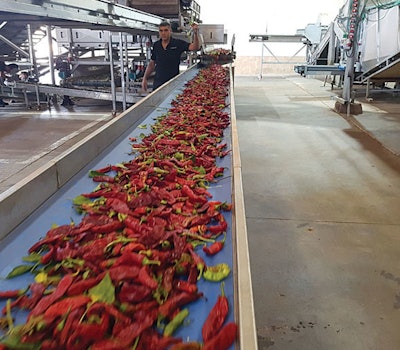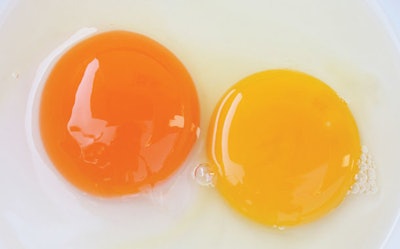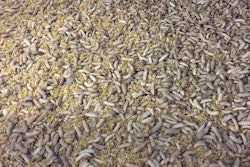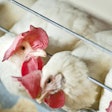
This natural pigment is good for layers, farmers and consumers, and can provide market differentiation for egg producers.
There are many markets in the world in which egg yolk pigmentation is very important. Yolk color can be a differentiating characteristic for egg quality and layer health, as well as a way to distinguish between brands.
Yolks with enhanced color do not have to be limited to specialty eggs. Pigmentation provides appeal to products, which becomes a selling point for consumers who like pigmented egg yolks or chicken.
There are many pigments sold in the world, either synthetic or natural. Synthetic colors are added to feed for yolk pigmentation to get the desired effect at a relatively low cost. Consumers may not be aware that the source of color is not natural, but considering the trends nowadays, this can change.
Distinguishing between egg yolks that are “naturally enhanced” ensures transparency and rewards growers offering a healthier and natural alternative.
Paprika as an additive
The Israeli paprika is a variety of the Hungarian paprika. It contains a higher percentage of sugar, making it sweeter than Chinese or Mexican varieties. Chickens do not like hot, spicy paprikas, so the sweeter variety helps with palatability.
The higher sugar level, however, creates a tendency to clump over time.
Clumping does not interfere with the pigmentation effect, but it makes it somewhat more difficult to process. The finer the powder is, the more clumping. No artificial anti-clumping agents are used in feed-grade paprika, so grinding it a little closer to mesh 20 prevents clumping.
 Adding paprika to layer rations makes them produce eggs with deep orange yolks. (Courtesy Amir Cahaner)
Adding paprika to layer rations makes them produce eggs with deep orange yolks. (Courtesy Amir Cahaner)Coloration and nutritional value
Sweet paprika is a natural source of carotenoids, the coloring compound used for yolk pigmentation.
“Paprika is different from other pigments in several levels,” explains Amir Cahaner, vice president of sales and marketing at SDA Natural Dehydrated Ingredients in Israel. “The first one is that producers used to utilize other natural pigments, such as marigold or combinations of marigold and alfalfa, with which they reach only a certain level of pigmentation on the yolk fan, they cannot get higher than that.”
Egg yolks enhanced with paprika added to feed have a richer, deeper gold or orange color. With marigold and alfalfa, producers get into rich yellow, “but they do not get into what they call the sunset section” of the yolk fan.
Empirically speaking, it seems that the simultaneous use of marigold extracts and paprika achieves a synergistic effect.
“It seems that paprika works better than marigold, and most certainly in a more stable way, but paprika and marigold work better than just adding up the two of them,” he says.
Paprika is used in small proportions, a few kilograms per ton, but it still has good nutritional values. While synthetic additives have no nutritional value, paprika is rich in protein, fibers, minerals, vitamin C and beta-carotene.
 Paprika is rich in protein, fibers, minerals, vitamin C and beta-carotene. (Courtesy SDA Natural Dehydrated Ingredients)
Paprika is rich in protein, fibers, minerals, vitamin C and beta-carotene. (Courtesy SDA Natural Dehydrated Ingredients)Adding paprika to feed
Paprika is very easy to use without preparation requirements. Ground paprika doesn’t need a premix and it is less sensitive than other ingredients.
Adding paprika to feed in small amounts does positively impact yolk color, but there are some other practical considerations:
- Source: In the global paprika market, there are fears of adding contaminated ingredients into feed mills due to some questionable sources.
- Cost: Paprika is considered expensive per given weight of feed, compared to synthetic additives, but not necessarily.
- Consumption: In some parts of the world, paprika is produced on the same lines as chili peppers. This might make paprika too hot, which in turn may reduce feed consumption and decrease productivity.
Concerning shelf life, paprika has to be well stored, under standard storage, protected from the open air and the sun, although it’s not as sensitive as other natural ingredients.
Paprika is a fine powder, but it mixes well.
“We found out that the feed industry likes it a little coarser than the food industry,” he says. “Most of the food users like paprika to be ground to mesh 40, but most feed users like it mesh 20.”
Paprika research
Leading Israeli agricultural research institutes, such as the Agricultural Research Organization (ARO) – Volcani Center and the Faculty of Agriculture, Food and Environment of the Hebrew University of Jerusalem, have conducted research trials with paprika to validate the field-proven efficacy of this natural pigment with millions of layers around the world.
A cooperative project with the Faculty of Agriculture provided scientific validation of the effect of varying concentrations of paprika in feed on egg yolk pigmentation. After one month, paprika in growing concentrations had a significant effect on the yolk color score of eggs for human consumption. Results pointed to a positive correlation between paprika concentration in the feed ration and yolk score, starting at 2.5 kg/MT, up to 5 kg/MT.
This also provided a benchmark to use paprika for egg yolk pigmentation.
“What we did find interesting is that the change is absolute, no matter where you start from,” Cahaner says. In corn-based feeds, coloring impact can start at eight or nine of the yolk color fan. But paprika’s influence is absolute in its value and it will increase the coloration.
Paprika is very easy to use and it is very easy to calculate how much is needed to reach a certain color, which is one of the most common questions, but it is paramount to know the color starting point.
Paprika safety
Paprika is a very common ingredient; however, when the food industry buys paprika, they sterilize it in-house, either with steam or irradiation. The same does not happen in feed mills.
“[Feed mills] get paprika sold in a quality that we call dock-to-stock,” Cahaner says, noting that no extra treatments or lab tests are required. “This is one of the main barriers between the very common use of paprika for egg yolk pigmentation and the way it is now. Feed mills are afraid of buying paprika of doubtful quality.”
Paprika can be an affordable feed ingredient, but the quality has to comply with standards to avoid problems in the feed mill, the farm and the end-users — the consumers. The price difference between premium paprika to the lowest price in the market does not exceed several dozens of cents per kilogram. So, when it is added in single kilogram per ton of feed, one should not be tempted to save negligible cost if the result is exposing the feed to contamination risk.
There are two important things to check when considering paprika: paprika can be obtained with no inherent risks and the reliability of the supply source.
Pigments in product marketing
When utilizing paprika for egg yolk pigmentation, the first obvious idea that comes to mind is the organic products market because there are artificial ingredients sold that do a very good job.
Nonetheless, “conventional farmers are starting not to use artificial ingredients and instead are using natural ones because of the ‘natural label’ that makes it worthy in terms of profit,” Cahaner reports.
The number of conventional egg producers that care more about feed and eggs being natural is growing, maybe as a result of customer pressure or regulations.














